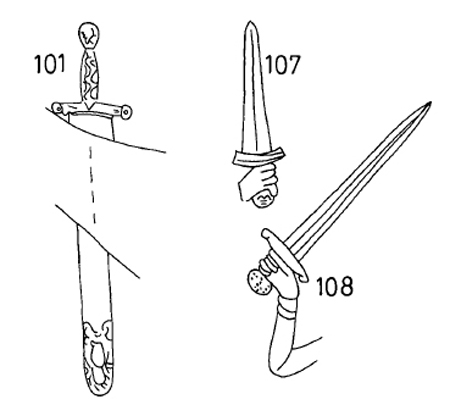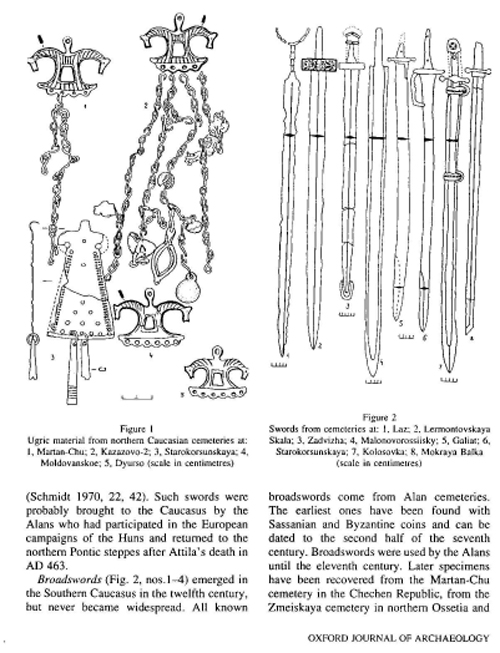| W. Schütz wrote: |
| It just looks like a very front heavy, very blade-thick and oddly shaped weapon. |
That's just how a lot of messers and falchions are, and many messers have longer handles like that.
As far as being oriental, the pommel looks like a fairly standard octagonal scent stopper. The cross looks fairly regular and European, too. The part of the cross that extends down the blade seems to end in a fleur-de-lis.
I'm sure that over time oriental style did influenced sword design in Europe. However, this particular sword is no more oriental than any other longsword, messer, or falchion or its day.


